
Weave pole guide wires are essential tools in dog agility training, designed to help dogs navigate weave poles efficiently․ Made from durable materials like polyethylene or PVC, they ensure safety and visibility, guiding dogs through the poles with ease․ These wires are a crucial aid for trainers, helping to improve performance and consistency in agility courses․
What Are Weave Pole Guide Wires?
Weave pole guide wires are specialized tools designed to assist dogs in navigating weave poles during agility training․ Typically made from durable materials like polyethylene tubing or PVC, these wires are flexible, visibility-enhancing aids that attach to the poles․ Each guide wire is usually 56 inches long, providing ample space for dogs to practice weaving․ They are designed to snap onto PVC pipes or standard weave poles, ensuring easy setup and removal․ Guide wires are available in different sizes to fit various pole diameters, such as 3/4″ or 1″ PVC․ Their primary function is to create a clear, stable path for dogs, helping them learn proper weaving techniques while minimizing errors and risks during training․
Importance of Guide Wires in Dog Agility Training
Guide wires play a crucial role in dog agility training by providing a clear, stable, and safe path for dogs to navigate weave poles․ They help dogs learn proper weaving techniques, reducing errors and enhancing performance․ The wires are designed to minimize sagging, ensuring consistent guidance, and are made from durable, dog-safe materials like polyethylene or PVC․ Their visibility and flexibility make them essential for trainers, allowing dogs to focus on the weave pattern without distractions․ By using guide wires, trainers can effectively teach dogs to weave through poles with precision and confidence, making them an indispensable tool in modern agility training․
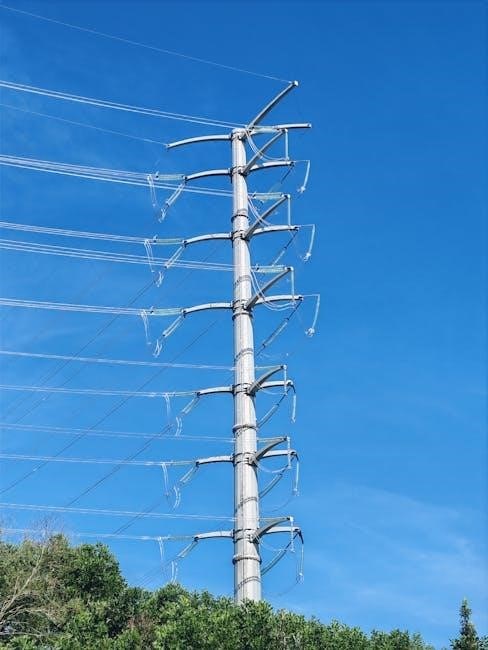
Benefits of Using Weave Pole Guide Wires
Weave pole guide wires enhance training efficiency, reduce errors, and provide clear visibility for dogs․ They are durable, safe, and offer a time-saving solution for trainers effectively․
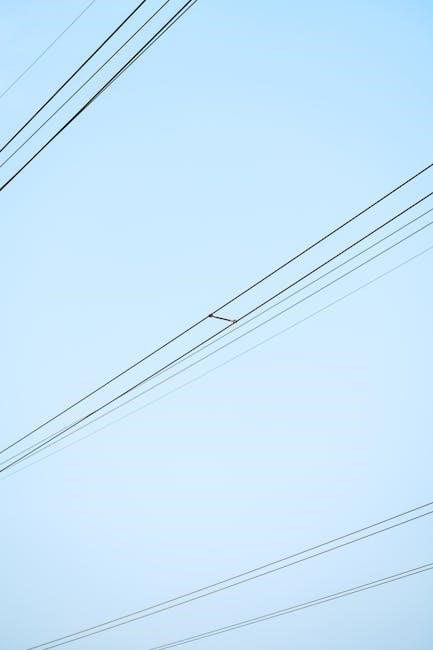
Improved Training Efficiency
Weave pole guide wires significantly enhance training efficiency by providing dogs with clear guidance through the poles․ These wires help dogs understand the correct path, reducing confusion and distractions․ Handlers can focus on delivering commands without constant interventions, allowing for smoother and more productive sessions․ The wires are designed to fit securely on PVC pipes, ensuring stability and visibility․ Made from durable materials like polyethylene tubing, they maintain their shape and provide consistent guidance․ This tool is especially beneficial for young or inexperienced dogs, helping them build confidence and mastery of the weave poles․ By streamlining the learning process, guide wires enable trainers to achieve faster progress and better results in agility training;
Reduced Risk of Errors During Training
Weave pole guide wires play a crucial role in minimizing errors during agility training․ By providing a clear, visible path through the poles, these wires help dogs maintain proper alignment and avoid common mistakes, such as skipping poles or entering incorrectly․ The stable, non-sagging design ensures consistent guidance, reducing the likelihood of dogs veering off course․ Additionally, the wires’ flexibility and lack of sharp edges ensure safety, allowing trainers to focus on technique without worrying about equipment-related hazards․ This tool is particularly beneficial for inexperienced dogs, as it helps them learn the correct weaving motion from the start, leading to fewer errors and faster mastery of the skill․ Guide wires are an invaluable asset for trainers aiming to improve accuracy and confidence in their dogs․
Enhanced Visibility for Dogs
Weave pole guide wires significantly enhance visibility for dogs, making it easier for them to navigate through the poles․ Constructed from materials like white polyethylene tubing or clear PVC, these wires provide a high-contrast visual guide that stands out against various training environments․ The clear design ensures dogs can easily see the path through the poles, reducing confusion and hesitation․ Additionally, the wires’ consistent placement and stability minimize sagging, ensuring a straight and visible path․ This enhanced visibility is particularly beneficial for dogs that are still learning or those training in low-light conditions․ By improving clarity and focus, guide wires help dogs perform more confidently and accurately during agility exercises․
Time-Saving Solution for Trainers
Weave pole guide wires offer a time-saving solution for trainers by streamlining the training process․ Their easy-to-use design allows for quick installation and removal, eliminating the need for complex adjustments․ Made from durable materials like polyethylene or PVC, these wires are long-lasting and require minimal maintenance․ Trainers can focus on coaching rather than constantly setting up equipment, saving valuable time during sessions․ The wires’ snap-on feature ensures they stay securely in place, reducing interruptions and allowing for smooth, continuous training․ This efficiency helps trainers maximize their time and effort, making guide wires an indispensable tool for effective dog agility training․

Types of Weave Pole Guide Wires
There are two main types of guide wires: fixed and adjustable․ Fixed wires are permanently attached to poles, while adjustable wires allow for customization and easy repositioning during training sessions․
Fixed Guide Wires
Fixed guide wires are permanently attached to weave poles, providing a stable and consistent training setup․ They are typically made from durable materials like polyethylene or PVC, ensuring longevity․ These wires are ideal for dogs that need clear guidance, as they maintain a fixed position, helping to prevent errors during training․ The permanent installation eliminates the need for frequent adjustments, making them a convenient option for trainers․ However, they may not be as versatile as adjustable wires, which can be modified based on training progress․ Fixed guide wires are a reliable choice for establishing a structured and repetitive learning environment for dogs in agility training․
Adjustable Guide Wires
Adjustable guide wires offer flexibility in dog agility training, allowing trainers to customize the setup based on the dog’s progress and needs․ These wires can be easily modified to different heights and angles, providing a tailored training experience․ Made from durable materials like polyethylene or PVC, they are designed to withstand regular use․ The adjustable feature helps in gradually introducing dogs to the weave poles, reducing errors and building confidence․ Their versatility makes them ideal for dogs at various skill levels, from beginners to advanced learners․ Adjustable guide wires are a practical solution for trainers seeking to fine-tune their training methods and ensure a smooth transition as dogs master the weave pole technique․

Materials Used for Guide Wires
Guide wires are typically made from durable materials like polyethylene tubing or PVC, ensuring flexibility, stability, and safety for dogs during agility training․
Polyethylene Tubing
Polyethylene tubing is a popular choice for guide wires due to its durability and flexibility․ It is lightweight yet strong, ensuring stability while allowing dogs to weave smoothly․ The tubing is resistant to weather conditions, making it ideal for outdoor training․ Its smooth surface prevents any sharp edges, prioritizing dog safety․ Additionally, polyethylene tubing is easy to clean and maintain, ensuring long-lasting performance․ Many trainers prefer it for its visibility, as it comes in bright colors, helping dogs focus during training․ Overall, polyethylene tubing offers a reliable and safe solution for dog agility training, making it a top material for guide wires․
PVC Construction
PVC construction is a common material for guide wires due to its durability and flexibility․ PVC guide wires are designed to snap securely onto PVC pipes, ensuring a stable and secure fit․ They are lightweight and weather-resistant, making them ideal for both indoor and outdoor training․ PVC guide wires often feature smooth edges, prioritizing dog safety and preventing injuries․ Their rigid yet flexible design helps maintain proper alignment, guiding dogs through weave poles effectively․ Many trainers appreciate PVC guide wires for their ease of installation and compatibility with standard PVC pipes․ Additionally, PVC construction ensures long-lasting performance and requires minimal maintenance, making it a practical choice for dog agility training equipment․
How to Choose the Right Guide Wires
Selecting the right guide wires involves considering size, material, and compatibility with your weave poles․ Ensure they fit securely and suit your dog’s training needs․
Size Considerations
When choosing guide wires, size is crucial for proper fit and functionality․ Ensure the wires are long enough to create ample space for dogs to weave comfortably․ Typically, guide wires are 56 inches long, providing sufficient room for training․ They should also match the diameter of your weave poles, with common sizes fitting 3/4″ PVC pipes․ Correct sizing prevents sagging and ensures stability, while improper fit may lead to training obstacles․ Always verify compatibility with your specific setup to optimize training efficiency and safety for your dog․
Compatibility with Weave Poles
Ensuring guide wires are compatible with your weave poles is vital for effective training․ Most guide wires are designed to fit standard 3/4″ PVC pipes, which are commonly used in dog agility equipment․ However, compatibility can vary depending on the manufacturer and specific design․ Some guide wires are tailored for homemade poles made from Schedule 40 PVC, while others may require precise measurements, such as 1 1/16″ or 1 5/16″ outer diameter, to ensure a secure fit․ Always verify the specifications of your weave poles and guide wires to avoid improper installation or functionality issues․ Proper compatibility ensures stability, safety, and optimal performance during training sessions․
Durability and Safety Features
Durability and safety are paramount when selecting weave pole guide wires․ High-quality guide wires are typically made from materials like polyethylene tubing or PVC, ensuring longevity and resistance to wear․ These materials are flexible yet sturdy, preventing sagging and maintaining stability during training․ Safety features include smooth, rounded edges and a secure clip-on design, eliminating sharp edges that could harm dogs․ The all-plastic construction of many guide wires enhances safety, avoiding metal components that might pose risks․ Additionally, their UV-stable properties ensure they remain durable under various weather conditions․ Trainers can rely on these features to provide a secure and injury-free training environment for their dogs, focusing on performance without compromising safety․
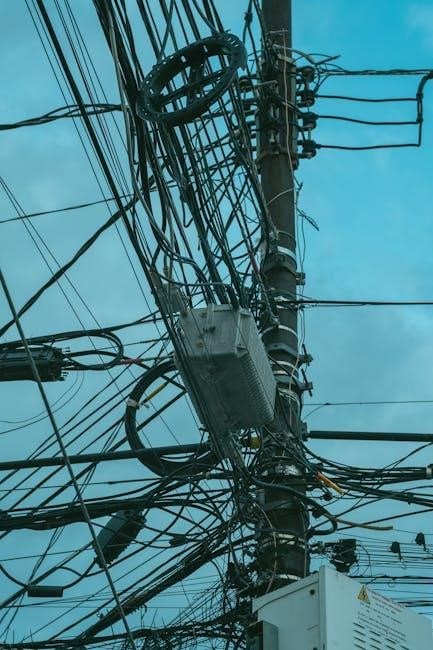
Installation and Assembly of Guide Wires
Guide wires are easy to install, often snapping onto PVC pipes without tools․ Assembly may require attaching clips or adjusting lengths, ensuring a secure fit for training․
Step-by-Step Assembly Process
Begin by unpacking the guide wires and ensuring all components are included․ Measure and cut the wires to the desired length if necessary, using the provided sizing guide․ Attach the snap-on clips to the ends of the wires, ensuring a secure fit․ Next, align the wires with the weave poles, snapping them onto the PVC pipes․ Adjust the tension to prevent sagging and ensure stability․ For models requiring tools, use a wrench to tighten connections firmly․ Double-check all attachments for safety and durability․ Finally, test the setup with your dog to ensure proper functionality and make any necessary adjustments․ This process ensures a sturdy and safe training environment for dogs to master weave pole navigation․
Tools and Materials Required
Assembling weave pole guide wires typically requires a few essential tools and materials․ Start with the guide wires themselves, made from durable materials like polyethylene or PVC․ You will also need snap-on clips or connectors to attach the wires to the weave poles․ A wrench or pliers may be necessary for tightening connections․ Measuring tape ensures accurate sizing, while wire cutters are useful for trimming excess material․ For certain models, Allen keys or screwdrivers might be needed to secure fittings․ Ensure all components are compatible with your specific weave pole setup, such as 3/4 PVC pipes․ Having these tools on hand will streamline the assembly process and ensure a secure, functional setup for training․
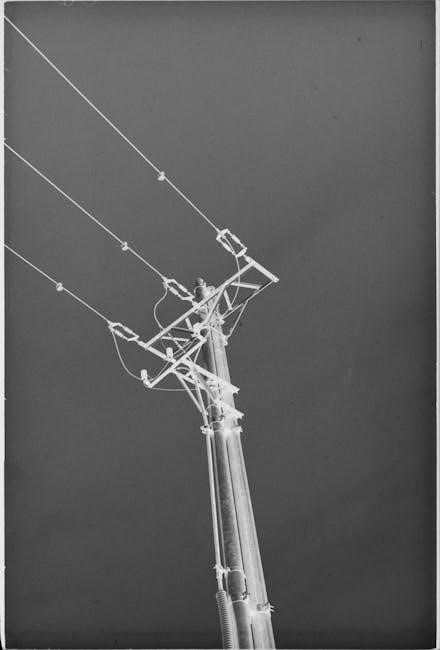
Using Guide Wires for Training
Guide wires simplify dog agility training by providing clear pathways through weave poles․ Their snap-on design ensures easy setup, helping dogs learn to weave efficiently and confidently․
Setting Up the Training Area
Setting up the training area with guide wires ensures a smooth and effective learning process for dogs․ Begin by attaching the guide wires to the weave poles, ensuring they are securely snapped on․ For 3/4 PVC pipes, measure the outer diameter to confirm compatibility․ The wires should be taut to prevent sagging, providing clear visibility for the dog․ Place the poles in a straight line, spaced appropriately for your dog’s skill level․ Ensure the area is free from distractions and obstacles․ With the guide wires in place, dogs can focus on weaving through the poles without confusion or hesitation․ Proper setup enhances training efficiency and helps dogs master the weave pole exercise effectively․
Introducing Guide Wires to Dogs
Introducing guide wires to dogs requires patience and positivity․ Start by allowing your dog to explore the setup at their own pace, ensuring they are comfortable with the presence of the wires․ Reward curiosity with treats and praise to build confidence․ Gradually introduce the guide wires, beginning with a few poles and increasing the number as your dog becomes familiar․ The wires’ visibility and stability help dogs understand the path, making the learning process smoother․ Positive reinforcement is key, encouraging your dog to weave through the poles confidently․ This method ensures a stress-free introduction, helping dogs adapt to the guide wires and improve their agility skills effectively․
Safety Features of Guide Wires
Guide wires are designed with no sharp edges, ensuring dog safety․ Their stability and flexibility prevent sagging, while durable materials like PVC and polyethylene provide long-lasting performance․
No Sharp Edges
One of the standout safety features of guide wires is their smooth, rounded design, which eliminates any sharp edges․ This ensures that dogs can train without the risk of injury, even during intense agility sessions․ The materials used, such as polyethylene tubing and PVC, are carefully crafted to maintain a smooth surface․ Trainers can have peace of mind knowing that the wires are safe for their dogs to interact with․ This attention to detail in design not only enhances safety but also contributes to the overall effectiveness of the training process․ Sharp edges are completely avoided, making the guide wires a reliable choice for dog agility training․
Stability and Flexibility
Weave pole guide wires are designed to offer both stability and flexibility, ensuring they remain upright during training while allowing for natural movement․ Their vertical stability prevents sagging, which can confuse dogs, while their side-to-side flexibility accommodates the dynamic nature of agility training․ Made from durable materials like polyethylene tubing and PVC, these wires are built to withstand rigorous use without losing shape․ The combination of stability and flexibility ensures that guide wires provide consistent guidance for dogs, helping them navigate the weave poles with confidence․ This balance is crucial for effective training, as it allows dogs to focus on the exercise without being distracted by unstable or rigid equipment․

Troubleshooting Common Issues
Common issues with guide wires include sagging and improper fit․ Ensuring correct installation and using the right size for your poles can prevent these problems, ensuring smooth training sessions․
Sagging Wires
Sagging wires are a common issue in dog agility training, particularly when guide wires are not properly fitted or secured․ This can create an uneven path for dogs, making it difficult for them to weave efficiently․ To address this, trainers should ensure wires are tightly secured to the weave poles and consider using thicker, more rigid materials like polyethylene tubing or PVC construction․ Some guide wires are designed with anti-sag features, such as flexible yet stable constructions, to maintain proper alignment․ Regularly inspecting and adjusting the wires can prevent sagging, ensuring a smooth and safe training experience for dogs․ Proper installation and maintenance are key to avoiding this issue and keeping training sessions effective․
Improper Fit on Weave Poles
An improper fit of guide wires on weave poles can hinder training effectiveness and safety․ If the wires are too loose or too tight, they may not provide the necessary guidance for dogs, leading to inconsistent performance․ It is crucial to ensure that guide wires are specifically designed for the size and material of the poles being used․ For example, 3/4 PVC pipes require guide wires measured at 1 1/16 OD (outer diameter), while 1 guide wires need poles measured at 1 5/16 OD․ Using incompatible sizes can result in poor alignment, making it difficult for dogs to navigate the weave poles correctly․ Selecting guide wires that are tailored to the pole dimensions ensures a proper fit, enhancing training results and safety for the dog․
DIY Guide Wire Solutions
DIY guide wires often use aluminum rods or homemade setups, providing cost-effective and customizable training aids for dog agility․ Popular options include PVC pipe configurations and adjustable designs․
Using Aluminum Rods
Aluminum rods are a popular choice for DIY guide wires due to their durability and flexibility․ They can be easily cut to the desired length and attached to weave poles using clips or brackets․ These rods provide a sturdy structure for dogs to weave through, helping to maintain proper form and consistency․ Their lightweight design ensures they won’t weigh down the poles, while their smooth surface prevents any sharp edges that could harm the dog․ Aluminum rods are also easy to adjust, allowing trainers to customize the spacing and height of the guide wires․ This DIY solution is cost-effective and provides a reliable training aid for dogs learning to navigate weave poles effectively․
Homemade Guide Wire Setup
A homemade guide wire setup offers a cost-effective and customizable solution for dog agility training․ Using materials like PVC pipes, aluminum rods, or wooden dowels, you can create a tailored system to fit your weave poles․ Many trainers opt for PVC due to its flexibility and ease of use, while aluminum rods provide durability․ The setup involves attaching the guide wires to the poles using clips, brackets, or even zip ties․ This DIY approach allows for easy adjustments, ensuring the wires can be raised, lowered, or spaced according to the dog’s needs․ Homemade guide wires are lightweight, easy to install, and eliminate the need for specialized tools, making them a practical choice for trainers on a budget or those preferring a hands-on approach․
Weave pole guide wires are indispensable tools in dog agility training, offering a safe, efficient, and customizable solution to enhance performance and consistency for both dogs and trainers․
Final Thoughts on Weave Pole Guide Wires
Weave pole guide wires are an indispensable tool for dog agility training, offering a safe, efficient, and customizable solution for dogs of all sizes and skill levels․ Their durable construction, using materials like polyethylene or PVC, ensures longevity and safety, while their easy installation and adjustability make them a practical choice for trainers․ By providing clear guidance and reducing errors, these wires enhance training effectiveness and build confidence in dogs․ Their versatility allows trainers to tailor their setup to meet specific needs, making them a valuable investment for any agility training program․ With their focus on dog safety and performance improvement, weave pole guide wires remain a cornerstone in modern dog agility training․
Future of Guide Wires in Dog Agility Training
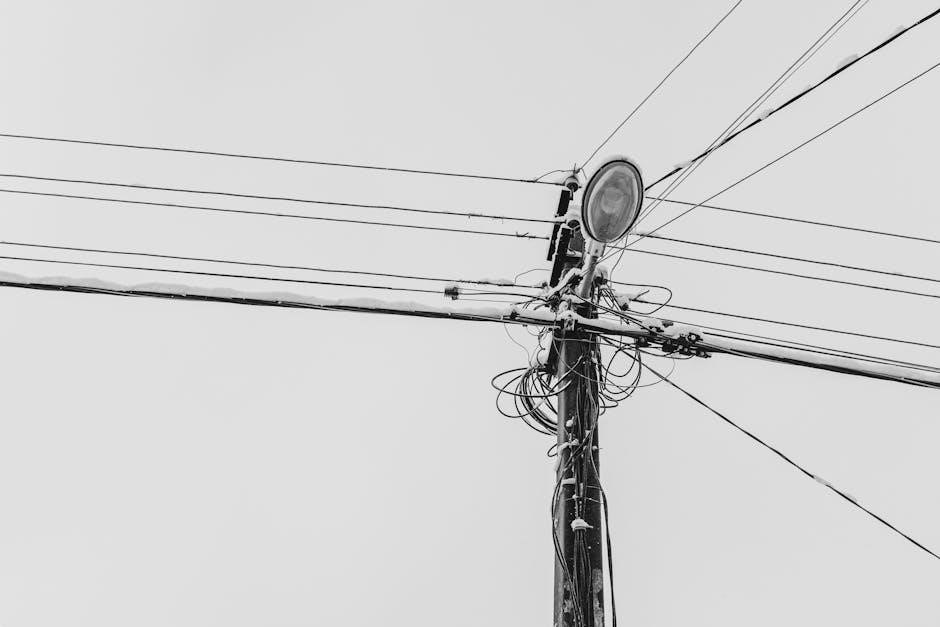
The future of guide wires in dog agility training is poised for innovation, with advancements in materials and design expected to enhance their functionality․ As trainers seek more effective tools, manufacturers are likely to develop guide wires with improved flexibility, durability, and visibility․ Integration of new technologies, such as adjustable tension systems or customizable lengths, could further personalize training setups․ Additionally, eco-friendly materials and sleeker designs may emerge, catering to the growing demand for sustainable and aesthetically pleasing equipment․ With a focus on dog safety and performance, the next generation of guide wires will continue to play a vital role in shaping the efficiency and success of dog agility training programs worldwide․



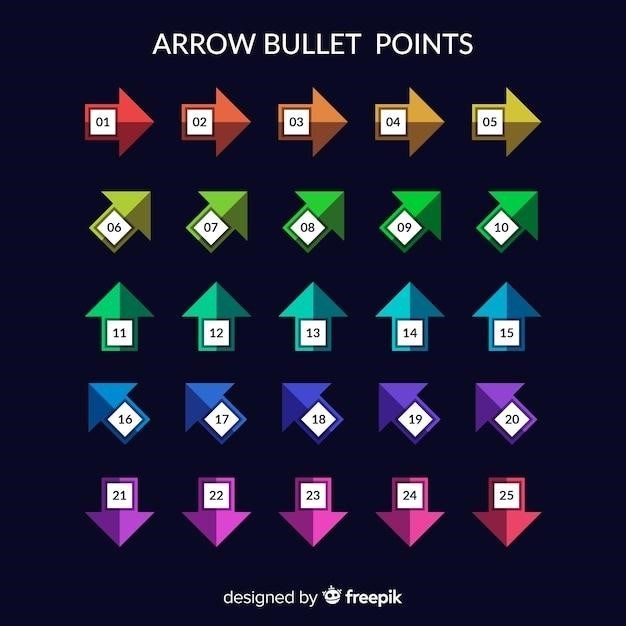
No comment yet, add your voice below!